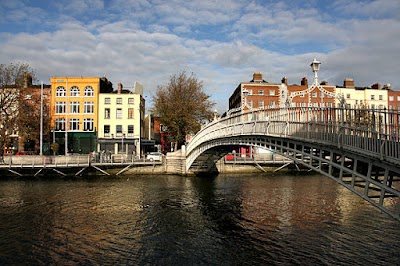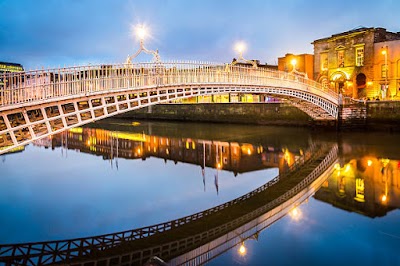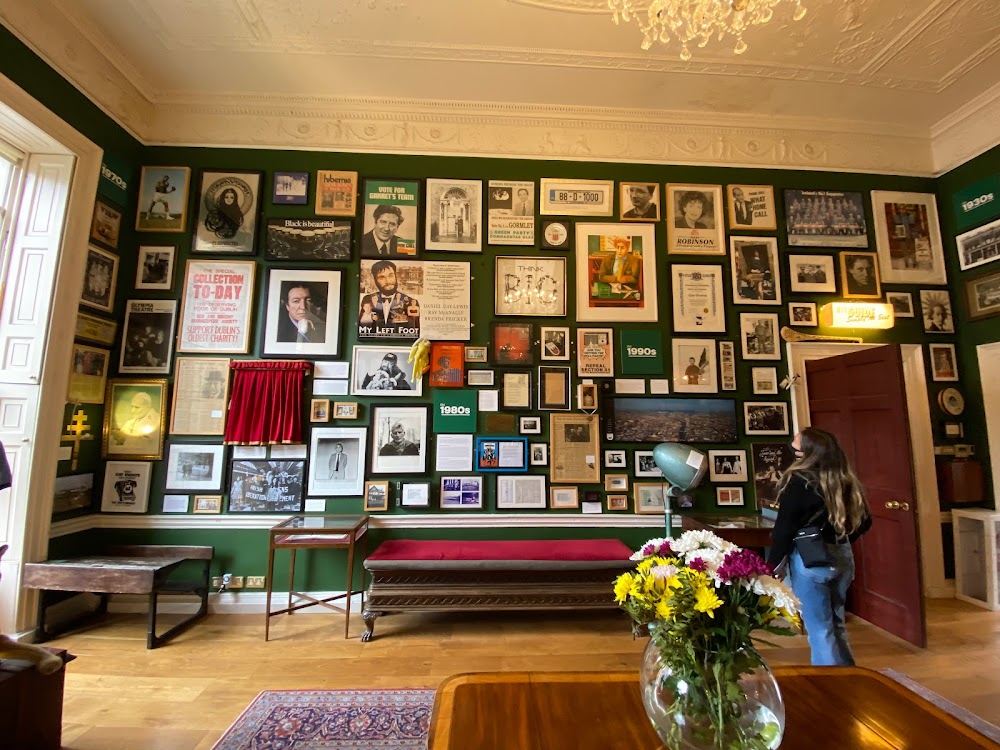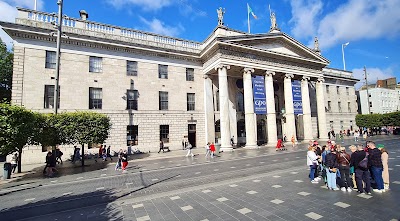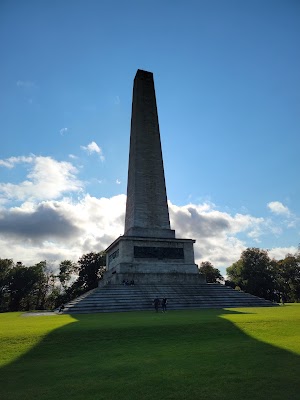Ha'penny Bridge (Droichead an Fhóid)
Overview
When visiting Dublin, one landmark you absolutely mustn't miss is the **Ha'penny Bridge**. This elegant and historic pedestrian bridge offers more than just a crossing over the River Liffey; it is a significant cultural icon of the city, steeped in history and adorned with fascinating anecdotes.
Constructed in **1816**, the Ha'penny Bridge is the oldest pedestrian bridge spanning the River Liffey. Its distinctive curved, cast-iron design was envisioned by John Windsor, an English ironmaster. He crafted the bridge in a workshop in Shropshire before shipping it piece by piece to Dublin. The bridge derives its popular name from the original toll of one halfpenny (ha’penny) charged for crossing it, a necessity at the time as Dubliners relied on ferries for the same journey.
The construction of the Ha'penny Bridge marked a pivotal moment in Dublin's development. It was built to replace a collection of rickety ferries operated by William Walsh, who was financially compensated to facilitate the bridge's creation. Under the terms of his contract, the halfpenny toll was established, generating revenue for maintenance for over a century. Although toll collection ceased in **1919**, the name Ha'penny Bridge remains a nostalgic memento of days gone by.
The bridge spans **43 meters** and features three archways that contribute to its gracefully distinctive curve. During a restoration in **2001**, the bridge was repainted in its original white, revitalizing its aesthetic and ensuring its longevity. Today, it remains pedestrian-only, serving as a delightful conduit for both locals and tourists exploring the city.
Historically, the Ha'penny Bridge occupies a special place in the hearts of Dubliners. It connects **Liffey Street** on the north side to **Merchant’s Arch** on the south side, facilitating easy access across the city. For many years, crossing the bridge has been viewed as a rite of passage for both citizens and visitors. Even today, many relish the experience of walking the same path that countless Dubliners have traversed over the past two centuries.
A stroll across the Ha'penny Bridge offers an ideal vantage point to appreciate the vibrancy of Dublin. The serene River Liffey flows beneath, adding a tranquil touch to the bustling environment, while the views from the bridge showcase a breathtaking panorama of the cityscape. The nearby streets are alive with cafes, pubs, and shops, providing ample opportunities for a delightful day out.
Interestingly, the bridge has found its way into various art forms, including literature, photography, and paintings. Dublin-born poet **William Butler Yeats** famously captured the spirit of Dublin, interwoven with landmarks like the Ha'penny Bridge. In more recent times, the bridge has also become a canvas for love locks, attached by couples as symbols of their enduring affection—though these locks are periodically removed to preserve the structure's integrity.
One cultural aspect that can't be overlooked is Dublin's warm and welcoming spirit, epitomized by the bridge’s constant foot traffic. From street performers to local vendors, the area around the Ha'penny Bridge buzzes with life, emphasizing how pivotal this site is to the city's daily rhythm.
In conclusion, the **Ha'penny Bridge** is more than just a functional passage over the River Liffey; it is a beloved Dublin icon, rich with historical significance and personal stories from generations of Dubliners and travelers alike. Its elegant design, storied past, and ongoing role in city life make it a compelling destination for anyone eager to explore Dublin's rich cultural tapestry. Whether you are a history enthusiast, a photography buff, or simply someone seeking to experience the heart and soul of Dublin, the Ha'penny Bridge stands as a must-visit landmark that will undoubtedly leave a lasting impression.


